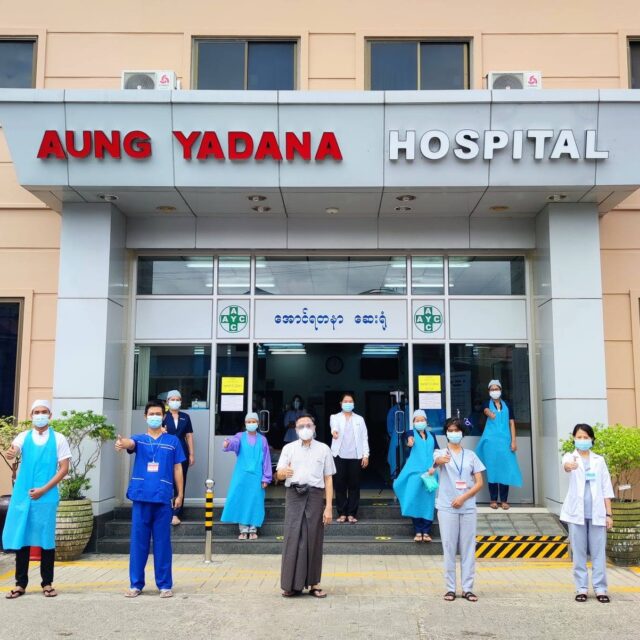By Saya Norm
Cancer refers to a group of diseases characterized by the uncontrolledgrowth and spread of abnormal cells in the body. Normal cells in the body grow, divide, and die in an orderly manner, but cancer cells continue to grow and divide uncontrollably, often forming a mass of tissue called a tumour. Cancer can occur in almost any part of the body and spread through the bloodstream or lymphatic system.
Cancer can be dangerous for several reasons. One of the main reasons is that cancer cells can grow and multiply uncontrollably, invading and damaging nearby tissues and organs. As the cancer cells continue to divide, they can form tumours, which can put pressure on surrounding tissues and organs, and interfere with their normal function. Another reason for the danger is that it can spread to other parts of the body, they can form new tumours and damage healthy tissues and organs, often leading to serious complications and a poorer prognosis.
Cancer can be difficult to detect in its early stages, when it may be more treatable. Some types of cancer may not cause any symptoms until they have advanced, making it harder to treat them effectively. And also traditional cancer treatments such as chemotherapy or radiation can have serious side effects and complications. While these treatments can be effective in killing cancer cells, they can also damage healthy cells and tissues in the body, leading to a range of adverse effects such as fatigue, nausea and hair loss.
Although there are various cancer treatments, cancer cells can mutate and adapt to their environment, making them resistant to traditional treatments such as chemotherapy and radiation thus they can continue to grow and spread even in the presence of treatments. Another challenge is that it can have multiple genetic mutations that make it difficult to target with a single therapy. Besides, cancer is difficult to detect in its early stages making them difficult to treat and reducing the chances of a positive outcome.
According to the World Health Organization, there was an estimated 19.3 million new cases of cancer worldwide in 2020 and 10 million cancer deaths. This figure includes all types of cancer and all age groups. The number of cancer cases has been increasing globally over the past few decades due to population growth, ageing and changes in lifestyles and environmental factors.
Ongoing research and advances in cancer treatment are helping to improve outcomes for patients with cancer.
The relationship between exercise and cancer treatment also is a result of ongoing research. In the past, people undergoing cancer treatment were advised to rest, as it was believed that vigorous activity could make the disease grow and spread more quickly. However, science is now showing that the opposite is true – exercise actually helps the body suppress the growth of cancer cells. Rob Newton and his team at Edith Cowan University in Western Australia, exposed this phenomenon when they were working with prostate cancer patients.
In 2016 his team identified exercise influences the physiology of cancer cells. His most recent study involved nine patients with incurable, advanced prostate cancer. They each performed 34 minutes of high-intensity exercise on a stationary bike and their blood serum was collected before and after exercise After a single dose of exercise was found to contain higher levels of myokines and suppressed the growth of prostate cancer cells. However, a single high-intensity exercise session has only a temporary effect. Continued exercise over six months changes the chemical environment of the body and has an ongoing anti-cancer action. Exercise is not only useful for cancer treatment but also for prevention.
-Physical exercise reduces cancer risks
The effect of exercise in reducing cancer risk is different in different kinds of cancer. Although no causal relationship between exercise and the risk of cancer has been shown, research does show that improvement in lifestyle can reduce the incidence of cancer. For example, the risk of cancer can be reduced by exercising at least 3-5 hours per week. Women are also benefited from appropriate high-intensity activities, such as heavy housework and freehand exercises, which are considered to be effective in lowering the risk of breast cancer.
Research showed that people who exercise regularly experienced a decrease in breast cancer risk by 15-20 per cent, colorectal cancer risk by 24 per cent, gastric cancer risk by 19 per cent, oesophagal cancer risk by 21 per cent and kidney cancer risk by 23 per cent respectively. Obesity is one of the high-risk factors for endometrial cancer. Exercise reduces obesity and lessens the risk of endometrial cancer by 20 per cent in women with high levels of exercise. Even in smokers, regular exercise had a lower risk of lung cancer. Other cancers such as blood, pancreas, ovary, thyroid and liver have only limited evidence that exercise reduces cancer risk.
– Physical exercise is beneficial for cancer treatment
Cancer treatments such as chemotherapy and targeted therapy can produce fatigue, cognitive decline, depression, bone mass and muscle mass reduction, cardiac toxicity and other adverse reactions. Those reactions may lead to poor quality of life and poor treatment effects, which makes in adherence or intolerance of the treatment which also affects the survival period. However, maintenance of physical activity can prevent some treatment-related adverse reactions.
The effect is evident in Rob Newton’s research. His work focused on the impact of the body’s muscles. About 10 years ago, it was discovered that the muscular system is an endocrine organ. It is the largest endocrine organ in the body. Lots of chemicals come out of the muscles, and they are very powerful signalling molecules that control and regulate every other system in the body.
When exercise is taken, muscles produce proteins called myokines that are released into the bloodstream. These myokines are capable of both suppressing cancer tumour growth and leading the charge against cancer cells
– Exercise enhances the curative effects of cancer treatment.
Exercise not only reduces the toxic side effects of traditional cancer treatments such as surgery, radiotherapy, chemotherapy and targeted chemotherapy, but also improves the therapeutic effects of these treatments.
Sports training improves postoperative weakness thus reducing complications and hospital stay days. Physical exercise together with traditional cancer treatment can play a role in inhibiting cancer cell growth by improving the cancer microenvironment, including increasing blood flow perfusion, promoting the formation of normal blood vessels and activating immune cells in the body.
– Exercise improves cancer prognosis
Survival rates for breast, prostate and colorectal cancers may be improved through moderate exercise but no strong positive correlation between exercise and survival rates for non-Hodgkin’s lymphoma, gastric and other cancers is not solid yet. It doesn’t mean exercise is not beneficial for those cancers. Anybody with any cancer type should perform the exercise most days, if not every day, to maintain a chemical environment within the body that is more hostile to cancer cells.
There’s been a huge emphasis on aerobic exercise, but research found combo exercises of aerobic and resistance are better. The muscular system is important and resistance training multiple times a week is essential to maintain health. For cancer patients undergoing gruelling treatments, vigorous exercise can be very difficult. That is why they should have a consultation with an accredited exercise physiologist or well-experienced personnel trainer to have their health and fitness assessed and get a tailored exercise prescription. For beginners who are difficult to see such an exercise guide professional, I’d like to advise chair yoga exercises first. Those are light, short-time exercises with deep breathing and suitable for any fitness state. You can find them online using the search word ‘chair yoga ‘.
The most important thing is to change the mindset. Start from where you can. If you do believe that you can, it is really you who can.













